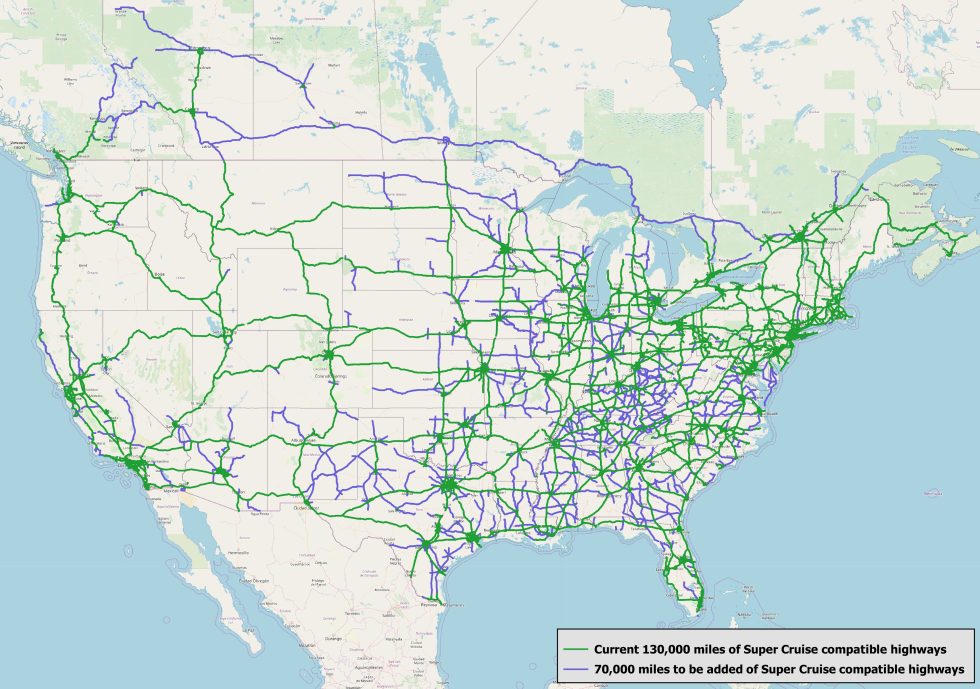Although we make every effort to cover our own travel costs, in this case Cadillac flew me to Detroit and provided three nights in a hotel.
DETROIT, Mich.—On Wednesday, Cadillac announced a rather hefty update to its Super Cruise driver assistance system. The newest version of the hands-free driving feature, which will be rolled out to customers later this year, includes a number of tweaks that expand the system's operational domain. And the geofenced area where it will function has increased, too—by the end of the year, it will work on an additional 70,000 miles (112,654km) of roads in the US and Canada.
Super Cruise is quite similar to more conventional adaptive cruise control and lane-keeping systems. It uses the car's forward-looking radar to maintain pace with other cars in traffic, and optical sensors track the road's lane markings, using that information to steer the car as necessary. Where it differs from lesser systems is the ability to go hands-free for long stretches at a time. This is achieved through the addition of two features that will be increasingly common: geofences and driver monitoring.
For one, Super Cruise can only be engaged on roads that have already been lidar mapped by GM. When the system debuted in 2017, that meant 130,000 miles (209,214km) of divided lane highways in the US and Canada. But from later this year, that road network is increasing by more than 50 percent, shown on the map below in blue:

Hands-free driving is still only possible on those geofenced roads if the driver is paying attention. The car determines this via a driver monitoring system—a camera mounted just above the steering wheel that uses gaze tracking to know if you're looking at the road ahead or not. If the system decides you've taken your eyes off the road for too long (the time interval is context dependent but is typically a few seconds) it begins escalating prompts and warnings to get you to return your attention to the task of driving.
The expanded Super Cruise road network now includes some divided-lane highways that have limited intersections and traffic control devices. Previously, it would only work on limited access highways, so there would be no danger of encountering a traffic light while Super Cruise was active. Cadillac says that drivers will receive escalating prompts to take back control when approaching railroad crossings, pedestrian crossings, and graded crossings with stop lights or stop signs. However, the system can maintain control past emergency vehicle crossings, grade crossings with no traffic control devices, and through blinking yellow lights. (These have been pre-mapped—the system isn't using cameras to detect the color of the flashing light at a crossing.)
Theoretically, the new operational domain means Super Cruise will work on the kinds of limited-access highways that have now seen two Tesla drivers killed when theiRead More – Source
[contf] [contfnew] 
Ars Technica
[contfnewc] [contfnewc]







